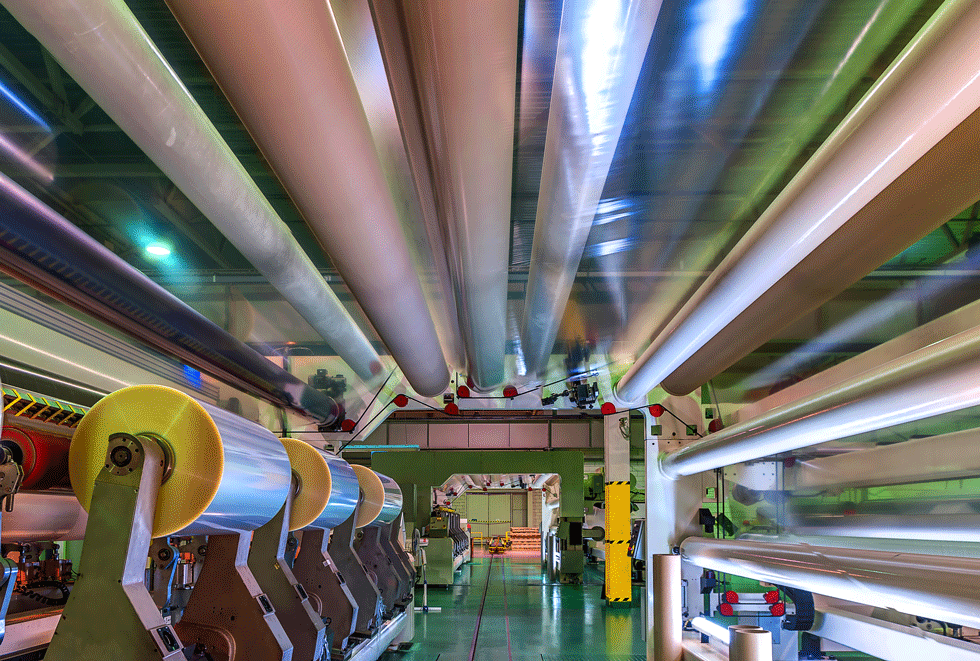

The fourth industrial revolution (4IR) is forcing the manufacturing sector into a state of transition on a global scale. As a result, digital technologies and related innovations present unprecedented potential for growth and transformation.
While both the East and West have experienced multiple industrial revolutions over the centuries, for the Gulf, where the manufacturing sector is relatively young, this will be a first – and in a region of forward-thinking leaders with a dynamic private sector and a strategic geographic location, this paradigm shift can only be seen as an opportunity.
The UAE’s economic diversification plans, UAE Vision 2021 and Abu Dhabi’s Economic Vision 2030, recognise the industrial sector as a strategic driver of the sustainability of the country’s economy, and the numbers support this: according to data from Oxford Economics, the UAE’s industrial sector – including extraction, manufacturing, utilities and construction – grew by more than a third in 2007-17, and is forecast to grow by another third over the next decade.
 These upward trajectories are not exclusive to the UAE. Over the past 40 years, Saudi Arabia has made significant progress in widening its industrial base. According to the Saudi Industrial Development Fund, the number of operating industrial units in the kingdom multiplied more than 30 times between 1974 and 2015. Additionally, capital investments in the kingdom’s manufacturing and industrial sectors increased from nearly $3.2bn in 1974 to more than $293bn in 2015.
These upward trajectories are not exclusive to the UAE. Over the past 40 years, Saudi Arabia has made significant progress in widening its industrial base. According to the Saudi Industrial Development Fund, the number of operating industrial units in the kingdom multiplied more than 30 times between 1974 and 2015. Additionally, capital investments in the kingdom’s manufacturing and industrial sectors increased from nearly $3.2bn in 1974 to more than $293bn in 2015.
The manufacturing sector’s anticipated growth in the Gulf signals how valued it is when it comes to economic prosperity. In order to secure long-term benefits, it is imperative to direct investments towards new innovations and technologies. Specifically in the UAE, a culture of innovation has been deeply instilled, and with the 4IR still at its infancy, now is the time to pilot it in the manufacturing sector.
The UAE is listed as a ‘Stand Out’ country in Tufts University’s 2017 Digital Planet report – one that is both digitally advanced and exhibits high momentum. This culture is paying off in the manufacturing sector, with more rewards expected to surface in the future. Additive manufacturing – the use of technologies that produce three-dimensional objects one layer at a time, such as in 3D printing – for example is an emerging trend in the sector. At the 2017 Global Manufacturing and Industrialisation Summit in Abu Dhabi, Siemens, Strata Manufacturing and Etihad Airways collaborated to develop the first certified 3D-printed aircraft interior part in the Middle East and North Africa.
Similarly, artificial intelligence (AI), a game changer in the global economy, will have a substantial impact on the Middle East’s manufacturing sector. A PwC report estimates that AI could contribute $320bn to the Middle East’s GDP by 2030, with the most significant gains in absolute terms expected in the construction and manufacturing sector.
Gulf countries have demonstrated a strong desire to take the lead in adopting AI. The UAE has launched the ‘UAE Strategy for Artificial Intelligence’ – the first of its kind in the region, and, in Bahrain, a centre dedicated to the study of AI is due to open at Bahrain Polytechnic in 2019. Saudi Arabia, meanwhile, generated international headlines by granting citizenship to ‘Sophia’, a humanoid robot who has since represented the kingdom at events across the world.
Disruptive ideas
In short, the region has created an environment where people are encouraged to look to the future and turn vision into reality. This approach, where disruptive ideas are not only welcomed but cultivated, along with the training support to apply such ideas, means the ever-growing talent pool is well on its way to sustaining a post-oil economy. We are armed with the curiosity to explore and discover new ways of doing things, and we have the resources and determination to drive the evolution of the manufacturing sector, in line with developments that the 4IR brings.
Strategically located between Europe, Africa and Asia, the Middle East is a preferred choice for global manufacturers. Operating from the region accelerates the speed at which products and investments flow between East and West, similar to China’s Belt & Road Initiative, boosting connectivity and cooperation between the Middle East, East Asia, Europe and East Africa.
With this in mind, the future of manufacturing in the region is clearly bright, and the appeal to capitalise on this potential is growing beyond its borders.
About the author
 Badr al-Olama is head of the organising committee for the Global Manufacturing & Industrialisation Summit
Badr al-Olama is head of the organising committee for the Global Manufacturing & Industrialisation Summit
You might also like...

Hassan Allam and Siemens confirm Hafeet Rail award
24 April 2024

UAE builds its downstream and chemical sectors
24 April 2024

Acwa Power eyes selective asset sales
24 April 2024

Bahrain mall to install solar carport
24 April 2024
A MEED Subscription...
Subscribe or upgrade your current MEED.com package to support your strategic planning with the MENA region’s best source of business information. Proceed to our online shop below to find out more about the features in each package.




